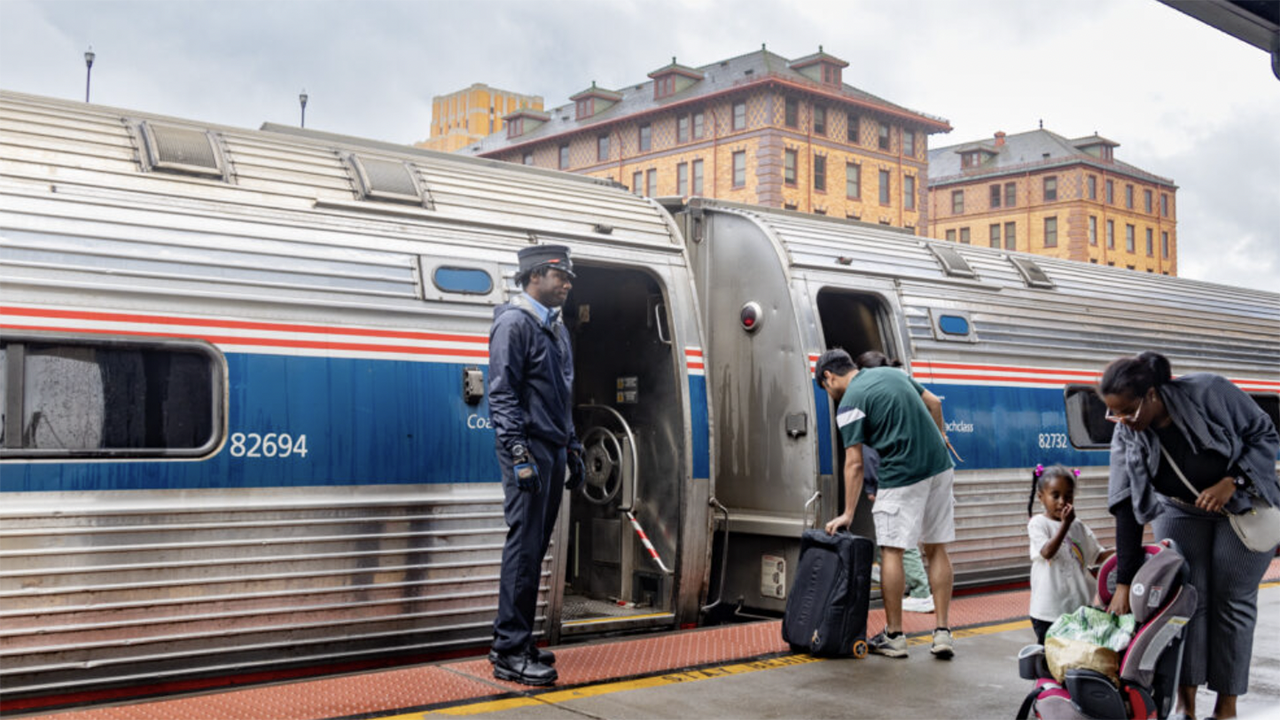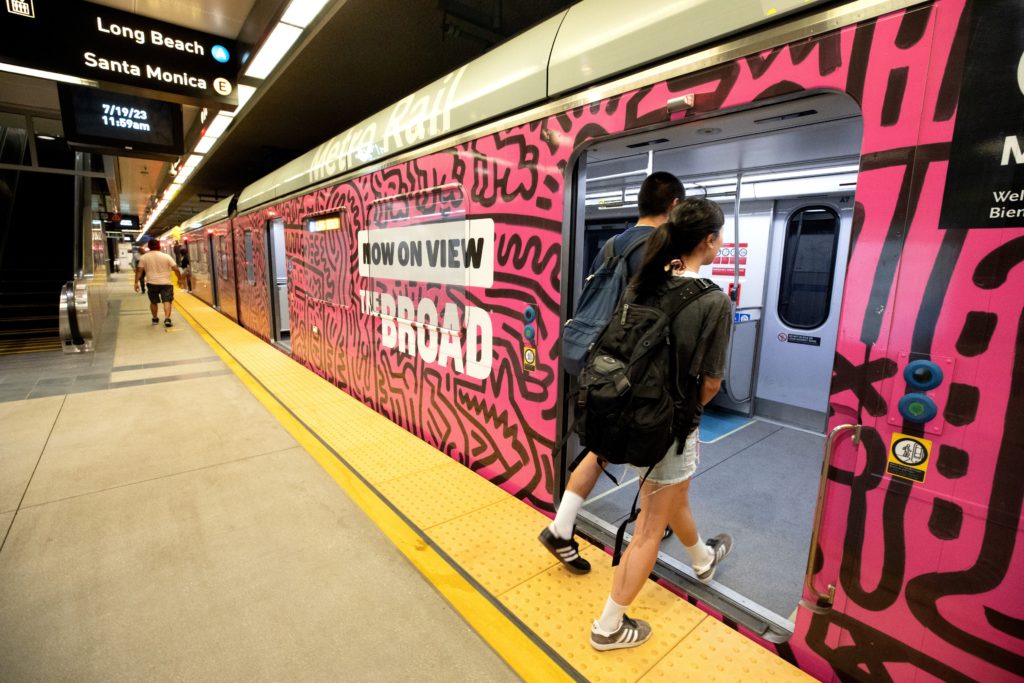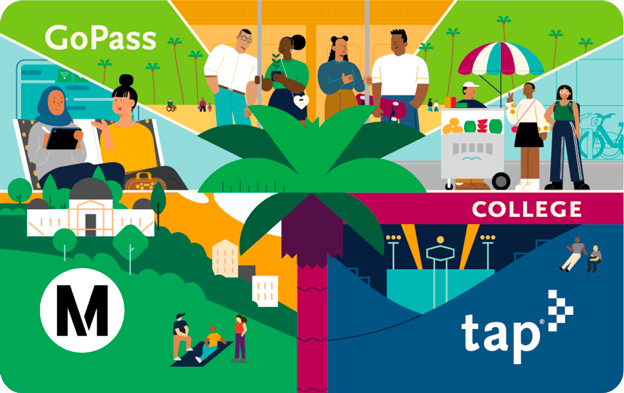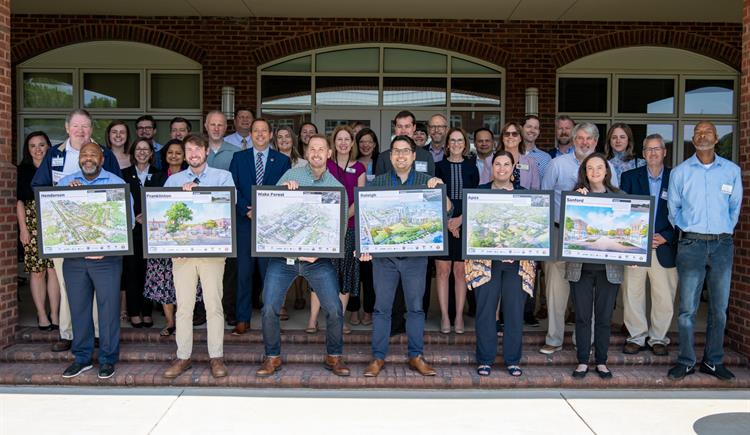
Transit Briefs: Amtrak, SEPTA/Amtrak, LA Metro, NCDOT, DART, SCCRTC
Written by Carolina Worrell, Senior Editor
Amtrak photo
Forbes names Amtrak one of America’s Best Employers for Women. Also, the Southeastern Pennsylvania Transportation Authority (SEPTA) and Amtrak plan to reconnect their stations at 30th Street; LA Metro’s GoPass pilot program is eligible for 1.3 million students; North Carolina Department of Transportation’s (NCDOT) new study explores the development along the S-Line rail corridor; downtown Dallas subway “D2” is no longer part of Dallas Area Rapid Transit’s (DART) long-term plans; and the Santa Cruz County Regional Transportation Commission (SCCRTC) orders a study for its Zero Emission Passenger Rail and Trail Project.
Amtrak
Amtrak announced Aug. 15 that the railroad has earned a spot on the Forbes 2023 list of Best Employers for Women. The achievement, Amtrak says, comes as the railroad “builds an expanded workforce to modernize infrastructure, improve and expand train services and reach more of America.”
Winners were selected from a survey of more than 60,000 U.S.-based employees working for companies of at least 1,000 people, including more than 40,000 women. Participants were asked to evaluate their employers on criteria, including work atmosphere, development opportunities, pay equity, family support, diversity and number of women serving as top executives or in board positions.
“At Amtrak, we are building an inclusive workplace where women are leading the way toward a new era of rail travel in the United States,” said Amtrak CEO Stephen Gardner. “This recognition acknowledges our commitment to creating equitable opportunities and embracing the unique perspectives of women in our organization as we work to bring more trains to more people.”
Amtrak says it “remains focused on cultivating an environment that is inclusive to all people and embracing the diversity of all employees.” This includes through the development of employee resource groups (ERGs), including Notch 8, which offers women and their allies opportunities to reach their full potential at Amtrak through professional and leadership development, networking, teamwork and collaboration.
“This award recognizes our efforts as we create an inclusive environment where women are treated fairly, have equal access to opportunities and can contribute to Amtrak’s success,” said Tracie Winbigler, Executive Vice President, CFO and Executive Sponsor of Notch 8, Amtrak’s ERG for women and allies. “I am proud to lead an Employee Resource Group like Notch 8 that offers women and employees the opportunity to reach their full potential.”
SEPTA/Amtrak
SEPTA and Amtrak have identified plans to restore a connecting tunnel as part of a federally funded renovation at Philadelphia’s 30th Street Station, according to a WHYY Education report.
According to the report, “as things stand now, the Market-Frankford Line stops at 30th Street, but you can’t get to the Amtrak hub without going above ground, following a route that lacks wayfinding signage and traverses a street that funnels automobile traffic off the I-76 highway.”
Work on Amtrak’s historic train hall’s $400 million reconstruction effort has already begun, spearheaded by asset management group Plenary Infrastructure. Plans call for upgrading facilities, interior, and grounds. There will be a brand-new concourse filled with amenities and shops, according to the report. There will also be a stairwell leading to a tunnel to SEPTA’s MFL platform.
According to the WHYY Education report, “the connector is not part of the current construction project, but Amtrak has submitted an application for a Consolidated Rail Infrastructure and Safety Improvements (CRISI) Program grant to fund its design.”
LA Metro
As the new school year begins LA Metro is encouraging students, families and school districts to participate in its GoPass pilot program, which allows student in K-12 and community college unlimited free rides on Metro rail and bus.
The program, renewed by LA Metro’s Board in April for a third year, currently has 274,915 registered using students GoPass for travel to school, work and fun, and has helped LA Metro grow its student ridership by 43% over pre-pandemic levels, according to the agency.
All schools in the Los Angeles Unified School District (LAUSD) will offer GoPass to their students this school year, with activation codes available through the LAUSD student portal. The Torrance Unified School District is joining the program this fall.

“We are excited to bring back the successful and popular GoPass pilot program and make it available again for a third year to even more K-12 and community college students. I look forward to seeing how we can continue this program further,” said Los Angeles Mayor and Metro Board Chair Karen Bass. “Thank you to Metro and CEO Stephanie Wiggins for recognizing how important fareless transit is for our students and helping ensure that cost never stands in the way of getting to school.”
Metro’s GoPass pilot is available to all students whose school district has registered with the program. Participating schools distribute TAP cards and activation codes so students can ride transit to school, extracurricular activities, or work without the worry of paying fares. Students can activate their cards on the online GoPass portal or by calling 866.TAPTOGO. They also have the option of using a virtual TAP card on the TAP LA App.
Entering year three of the pilot program, LA Metro says it is pleased to share that 102 school districts and charter networks, with a combined 1,441 schools, are participating in the program. There have been more than 22 million boardings since the program launched in October 2021.
“The GoPass pilot has helped hundreds of thousands of L.A. County students get to school, work and extracurricular activities, while also reducing family expenses,” said LA Metro CEO Stephanie Wiggins. “GoPass is central to our strategy to build transit ridership by introducing young people to the benefits of using transit long before they drive. We look forward to welcoming even more students onto our system in the coming school year.”

GoPass participants can take unlimited free rides on Metro bus and rail, AVTA (beginning September 2023), City of Commerce Transit, Culver CityBus, Foothill Transit, Glendale Beeline, GTrans, LADOT DASH, LA County Shuttles, Long Beach Transit, Lynwood Trolley, Montebello Bus, Norwalk Transit, Pasadena Transit, Santa Monica Big Blue Bus and Torrance Transit.
“Together we are opening destinations for young people to experience throughout the region,” LA Metro said. “Now museums, parks, the beach, concerts, and more are available to them with no transportation costs.”
More information is available here.
NCDOT
Thanks to a study released this week by NCDOT, communities along the S-Line rail corridor in central North Carolina now have plans and strategies to prepare for Transit Oriented Development (TOD).
According to NCDOT, the study explores development along the S-Line rail corridor, which is a key missing link between Raleigh and Richmond, Va. The S-Line will better connect the Southeast to Washington, D.C. and places further north.

“The study is the result of a close partnership between NCDOT and the S-Line communities to understand how passenger rail can help each community achieve their goals,” said Julie White, NCDOT Deputy Secretary for Multimodal Transportation. “From more affordable housing to more walkable vibrant town centers, the study provides guidance to the towns for how to make the most of the future passenger rail opportunity.”
Through the TOD study, NCDOT says communities along the S-Line would “leverage the future benefits of rail to plan for improved mobility and access, increased housing, downtown vibrancy, higher quality of life and economic vitality.”
The S-Line TOD study evaluated market conditions, affordable housing considerations, multimodal transportation opportunities, and regulatory conditions in several central North Carolina communities. The study proposes transportation improvements that would meet a vision responsive to each communities’ needs.
Two NCDOT divisions—Integrated Mobility and Rail—partnered with seven N.C. communities, including Sanford, Apex, Raleigh, Wake Forest, Youngsville, Franklinton, Henderson and Norlina to complete the study. The process evaluated previous transportation planning efforts, the potential for real estate market demand, and affordable housing considerations. Other planning factors included economic development, multimodal connectivity, environmental sustainability, and quality of life.
Each participating community received a “playbook” with recommendations to continue planning and development efforts. The “playbook” included sites to consider for transportation-focused development, a timeline for executing goals, and projects needed to complete multimodal transportation initiatives.
The next step of the plan, NCDOT says, involves mobility hub site assessments and design, made possible by a RAISE grant the U.S. Department of Transportation awarded in August 2022. “Mobility hubs serve as a focal point for connectivity and development in each community—bringing together rail service with local transportation modes, private development, and other public land uses,” the agency said.
“The outcomes of the TOD study underscore NCDOT’s goal to develop a robust multimodal system that provides safe and efficient access and mobility for all North Carolinians,” the agency added.
More information on the Integrated Mobility Division and TOD is available here.
DART
DART announced Aug. 15 that the Dallas downtown subway transit project, known as D-2, has been removed from the agency’s 20-year financial plan, according to an NBC 5 Dallas-Fort Worth report.
According to the report, D-2 was to be the second light rail transit line through downtown Dallas to “relieve crowding on the existing single path.”
“Through years of fighting over the disruption a new service route could cause, the City of Dallas insisted it as a subway, instead,” NBC 5 Dallas-Fort Worth reported.
In March 2021, the Dallas City Council unanimously supported the plan, which had reached a price tag of $1.7 billion, and the agency prepared an animation of how several planned stations and the subway tunnel might look. The design was 30% complete, according to the report.
SCCRTC
SCCRTC has ordered a project concept report for its Zero Emission Passenger Rail and Trail Project, according to a Santa Cruz Sentinel report.
According to the report, the study, which is expected to take two years to complete and cost about $9.2 million, is meant to “provide a stable project definition that can be used in subsequent planning tasks. It will provide an early analysis of environmental, engineering and design work that includes placement of stations, additional sidings, frequency of service and a closer look at especially challenging areas such as Beach Street in Santa Cruz and near Harkins Slough in Watsonville.”
According to a SCCRTC staff report, SCCRTC previously dedicated $3.8 million to the effort from its 2016 Measure D sales tax, which designates 8% of revenues for the rail corridor, including environmental analysis and potential uses for the corridor. An additional $350,000 was also allocated from the trail category Measure D funds.
In April, SCCRTC was awarded a $3.45 million from the state for the report, but in order to administer the funds and avoid violating the terms of the grant, it had to “renegotiate a prior agreement with the engineering firm it had selected for the effort to include the full concept report analysis instead of just the first year,” according to the Santa Cruz Sentinel report.
But the effort, Santa Cruz Sentinel reports, was still $1.63 million shy of meeting the $9.2 million needed, so SCCRTC voted unanimously Aug. 3 to fill the gap with additional funds from the Measure D rail category. “Should the commission win future state grants, it could choose to substitute in those or other discretionary funds to complete the concept report or subsequent phases of the project,” according to the report.
According to the news outlet, the majority of commissioners who spoke publicly on the item “voiced support for staff to continue to pursue other funding sources, as there was recognition that the pot of Measure D rail category funding has its limits and balancing the various needs of the rail line is likely to be a challenge going forward.”
“Whether you think rail is a great idea and we should move forward with all haste or you are skeptical of rail, this report is for you,” said Commission Chair and 1st District Supervisor Manu Koenig, who has been vocally skeptical of rail in the past. “At the end of the day, we’re going to have the best information possible, once this report is done.”
According to the Santa Cruz Sentinel report, “the concept report does not include the environmental documentation needed before construction can begin.” The environmental documentation and the concept report together are estimated to cost about $20 million, according to Senior Transportation Engineer Sarah Christensen.
“We’re going to continue to pursue the competitive grant sources out there,” said Christensen, while noting that “resources are limited as most of the state and regional programs are looking to fund projects ready for construction.” Still, she added that cost estimates and planning can change during the study phase and “we’ll be bringing a lot more information to the commission through the concept report work and give accurate cost estimates when they’re available.”



